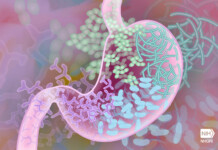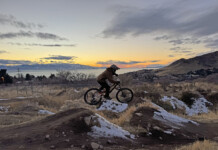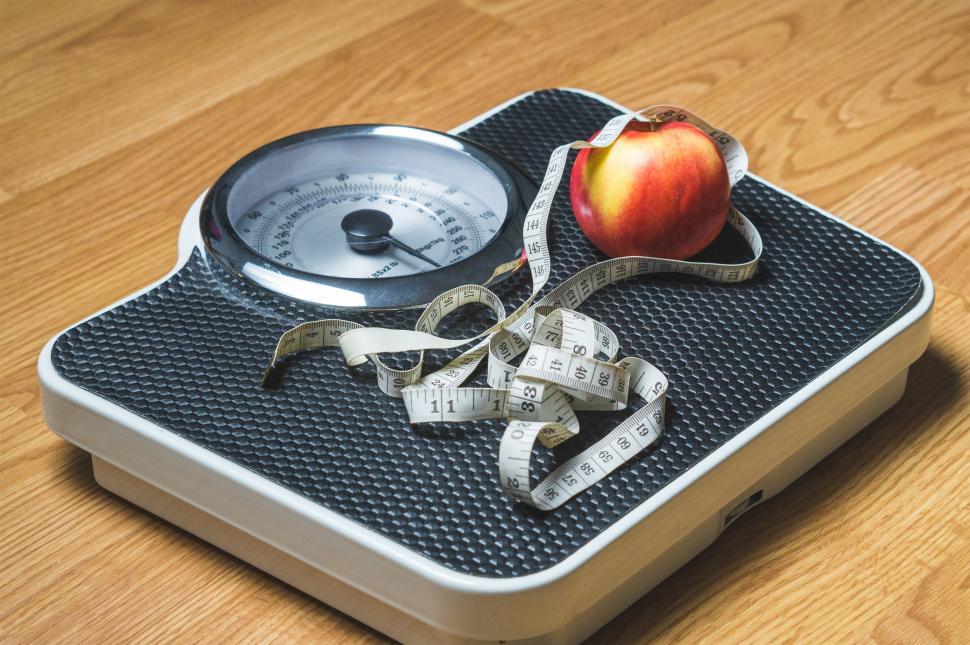By Breanne Nalder, MS Candidate and Katherine Beals, PhD, RD, FACSM, CSSD — We’ve all heard it before: water is the essence of life. Water makes up the majority of our total body weight (approximately 60% of our body weight is water) and is crucial for optimal athletic performance (dehydration is the second leading nutritional cause of poor performance behind glycogen depletion). But what you may not realize is that there are a lot of myths and misconceptions floating around about thermoregulation, hydration and fluid requirements. The following paragraphs will set the record straight and help you better determine exactly what to put in your bottles every time you go out on the road.
Thermoregulation and Hydration 101
When we exercise our bodies generate heat. This heat needs to be dissipated in order to maintain our body core temperature within a very narrow normal range. The primary mechanism to dissipate heat during exercise is via the evaporation of sweat…and sweat is primarily water so…you do the math.
The importance of water for the athlete goes beyond thermoregulation. Water is also needed for the maintenance of normal plasma volume and cardiovascular function, nutrient transport (blood is approximately 85% water), lubrication of joints, and a variety of metabolic reactions. Thus, adequate hydration is important to both the athlete’s health and performance.
Dehydration can cause muscle cramps, premature fatigue, increased recovery time, increased blood pressure and cardiovascular stress, and raises the risk of heat illness such as heat exhaustion and the more dangerous heat stroke.
On the other hand, over-hydration, also known as hyponatremia, can lead to swelling of brain cells, increased intracranial pressure, convulsions, pulmonary edema, respiratory failure, cardiac arrest and even death.
Thus, it is important that athletes know exactly when, what and how much to drink during exercise so that they don’t under drink or over drink.
The Thirst Factor
It is often said that thirst is a poor indicator of fluid needs and that by the time an athlete is thirsty she is already dehydrated. This mantra has led to recommendations that athletes should drink before they are thirsty and drink past the point at which thirst is quenched. These notions stem largely from research indicating that when athletes are instructed to drink according to “thirst” during exercise they typically replace only 60-70% of the fluid they lost. Yet, recent studies indicate that this level of dehydration does not negatively impact performance or health. Thus, while thirst is not a perfect indicator of hydration status, it does seem to provide an adequate indication of when and how much to drink during exercise. Nonetheless, replacing fluid when you are thirsty is not enough as you lose more than just water in sweat.
Sodium: Shake it or Leave it?
After water, sodium is the nutrient found in the largest amount in sweat. Sodium helps your body retain fluid and stimulates thirst; thus, it is key to maintaining normal plasma volume during exercise and ensuring adequate rehydration post exercise. Athletes need approximately 250 mg sodium/hr in training sessions or events greater than 60 min and at least 1150 mg sodium post workout with rehydration. If your sweat is salty, consume sodium during exercise via sport drinks and eat salty foods before and after rides longer than 2 hours. Keep in mind that drinking too much water without sodium can increase your risk of hyponatremia. Because of this, the Dietary Guidelines (1,500 mg/day) are inadequate for most athletes. So, as long as you’re sweating, salt is not only ok, but a necessary component of your hydration strategy!
Calculating YOUR Fluid Needs
The amount of fluid needed to maintain hydration is different for everyone. The differences are due to gender, age, body size, outside temperature, altitude, and individual sweat rate. To ensure that you are properly hydrated (i.e., not under- or over-hydrated) you should determine your own personal sweat rate(s) and replace fluid at those levels. The following tips will help you with your personalized fluid replacement strategy during exercise:
- Weigh yourself (minimal clothing, no shoes) before training
- Keep track of all fluid consumed during training
- Weigh yourself after training (same clothing)
- Find the difference and convert to ounces (1 lb. = 16 oz or 2 cups of fluid)
- Add the ounces you consumed during training
- Determine your hourly sweat rate: divide total ounces lost by hours of training.
- Replace fluid at or slightly below (but never above) that level
- Be sure to include some sodium either via a sports drink, electrolyte tablets or salty foods along with your fluid.
It is important to know how much YOU sweat in different environments. And remember that you can get dehydrated in the cold because you lose water as you breathe. Always have the goal to lose no more than 2% body weight when riding, as any more than that can decrease performance output by 7% or more.
What About Sport Drinks?
On top of fluid and electrolytes, sport drinks provide carbohydrate for our muscles and brain, thus they can play a vital role in the cyclists performance. Although there are some differences between the various sport drinks in terms of the content and composition of electrolytes and carbohydrate, these differences are relatively small and mostly insignificant from a performance standpoint (despite the marketing hype). Some of the newer sport drinks on the market contain protein, which has not been shown in research to provide a performance benefit during cycling, but may aid in recovery post exercise. For short rides (less than 60 minutes) of low to moderate intensity, water is adequate. Sport drinks (6-8% carbohydrate) are needed during moderate intensity cycling lasting longer than 60 minutes. High intensity riding (greater than 45 minutes, especially in heat) and endurance training (greater than 90 minutes) definitely require sport drinks. Sports drinks may also be used post exercise, as they provide several of the key nutrients needed for recovery (i.e., fluid, carbohydrate and electrolytes).
Tips for the Road
- Always pay attention to thirst signals and drink when thirsty, on or off the bike
- Drink more when adapting to a new environment (i.e., humidity and altitude changes)
- Start hydrating at least 4 hours before a ride or race
- During recovery, aim to replenish 150% of lost fluids: for every 1 lb (½ kg) lost, replace with~ 3 cups (~0.75 L) water and be sure to include some sodium-rich foods and/or fluids to aid in fluid retention.
- You can gauge your hydration and electrolyte status by monitoring urine color and volume. Monitor your urine color & frequency: urine that is dark in color and/or low in volume indicates dehydration, so light yellow/lemonade color is ideal.
- Practice, practice, practice! Use training rides to experiment with different drinks, powders, electrolyte tablets, etc. Figuring out what works best for you will boost confidence on the day of an event and help you achieve your potential and optimize your cycling performance.
Katherine Beals, PhD, RD is an associate professor in the division of nutrition at the University of Utah. She is a fellow of the American College of Sports Medicine and a Certified Specialist in Sports Dietetics.
Breanne Nalder is an elite cyclist and a Master’s Candidate in the Division of Nutrition at the University of Utah working on her thesis under the direction of Dr Beals.









This is the best hydrating guidance I’ve read on the internet, after checking ~20 different sites. While training for centuries with ~5000 ft of climbing, I’ve been drinking less than optimal based on weight lost. I’m definitely going to try Dr. Beals’ recommendations.
Comments are closed.